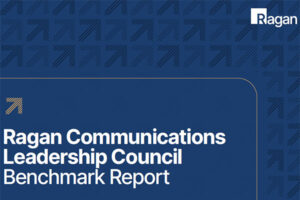5 ways internal communicators can take the bull by the horns in 2022
Be proactive about pursuing (or stopping) these initiatives to improve the impact, focus and quality of your work in the coming year.

At this time of year, it’s commonplace to read about the upcoming year’s top trends and likely changes.
But having been writing about and working in internal communication since the late ’90s, the annual ritual of forecasting the trends for the upcoming year has become a bit hackneyed. Partly, this is because annual trends are largely beyond the control of internal communicators. More to the point, this has been because IC folks have resisted taking matters into their own hands.
So, this year, I’m proposing something new: five things that would make a difference if internal communication leaders were to actually step up, take matters into their own hands, and share their experiences once having done so.
1. Bust the hybrid hype, and grab hold of the remote revolution.
There’s been a ridiculous amount of talk about “hybrid,” “hybrid working” and even “hybrid business models.” In reality, “hybrid” is a shade of gray between two very black-and-white approaches – having people based in physical locations (“office-based”) and having people based outside of one’s own physical premises (“remote”).
From a communication standpoint, there is a clear distinction between office-first and remote-first organizations – in that remote companies have no ongoing ability to physically convene employees into a physical space and use that space as a venue and channel for communication.
At the same time, the absence of such physical space moves internal communication from being simply a function or activity within a company to being the fundamental organizational and operational platform of the business.
Currently, hundreds of organizations are essentially “reinventing the wheel” by having to develop their own internal communication practices and platforms to sustain growth and performance, with varying degrees of success and chaos. This is similar to what ensues when companies grow too quickly or widely without formal communication support and discipline. Quickly getting an understanding of what works and what doesn’t is an existential issue for IC. Either IC understands and leads the revolutionary changes that successful remote-first practices and their enabling technologies will drive (both in remote and office-based organizations alike), or companies could accelerate the trend toward leaving employees to navigate organizational chaos and conflicting priorities on their own.
2. Find the line between “survey fatigue” and “willful blindness.”
For years, leading internal communication minds such as Jason Anthoine and Priya Bates have said that internal communication pros will not be taken seriously on strategic matters unless they “bring the data” to strategic conversations. But the question of “bringing the data ” has at least been as much of a problem about organizational willingness to collect actionable data.
For decades, most large companies have spent hefty sums on employee engagement surveys that ask about long-term business and cultural issues rather than identifying immediate-term alignment and prioritization gaps. Often, when internal comms pros ask for even basic follow-up, like the “two-question survey” that assesses priority gaps between leaders, managers and staff, the response is fierce – that “we can’t do another survey.” The so-called phenomenon of “survey fatigue” is often given as the reason, or sometimes “the need to avoid compromising high response rates to our employee engagement survey.”
If internal communicators are prevented from getting the essential data they need to influence strategy and the way employees are to be asked to participate in its execution, they must be willing to look more deeply at the motives driving this resistance. Do leaders believe that they can’t genuinely know whether employees, managers and leaders are working to different priority sets – or are they afraid if they do such research, they will be opening Pandora’s box? Many simply don’t want to expose gaps that are stark, embarrassing, and requiring of strong measures beyond what they see as within the organization’s change capacity.
There is a legal term for such behavior: “willful blindness.” While it’s not necessarily the duty of internal communicators to “whistleblow” when they believe they are encountering this behavior, they do need the ability to identify it and acknowledge the “unwillingness to know” when having to formulate strategies and actions while being kept from getting the data they need to execute those strategies successfully.
3. Quantify the costs of inaction and consequences of chaos.
Budget pressure on internal communication has continued unabated throughout the COVID-19 crisis, even with all of the big talk about IC having its “moment” during the crisis’ peak in 2020.
This budget pressure is occurring at a time when the range of issues that could benefit from the strategic use of IC has never been wider – moving well beyond issues of employee hygiene factors like “well-being,” “employee experience” and “hybrid working” toward integration with core business processes like supply chains, onboarding, talent management, and the optimization of top-heavy and expensive line management structures.
For IC to play in the higher-value elements of the internal agenda, it cannot simply take dictation or “follow its heart” into the well-being space. Instead, IC leaders must quickly become very more adept at quantifying the costs and risks of inaction and championing the right kind of strategic and financial investment to avoid these consequences.
There are genuine negative impacts of leaving managers and McKinsey to their own devices to mobilize employees behind major commercial and strategic initiatives – cynicism, misalignment or even organizational chaos. Simply trying to make business cases for our own expenditures is no longer enough. We must be able to show the return on investment or the opportunity cost of not investing.
4. Stop being the “well-being brigade” or ”corporate conscience.”
My aversion to internal comms taking ownership of the “well-being” conversation is not simply because it detracts from the strategic role of the function in favor of a “soft and fluffy skills” positioning, but because focusing on things like well-being also distracts IC pros from their genuine responsibility to support crucial business objectives.
It is one thing to try to help companies avoid burning their staff out because it’s bad both for employees and the business. It’s another thing to say that the point of the organization is to provide a happy employee experience, regardless of whether it succeeds financially or commercially. Even with business leaders talking openly about mental health and employee well-being, for IC people to identify themselves as “employee advocates” and “the corporate conscience” is extremely dangerous positioning, particularly as such concerns fade away in the face of increasingly cut-throat competition post-pandemic. People and functions that are not seen as committed to tangible organizational success will be seen as expendable.
5. Demand and agree on a mandate.
With the wide range of demands, imperatives and opportunities the current situation presents IC, and the unlikelihood of dramatic new investment in the discipline, IC leaders must take the initiative to scope out what Russell-Olivia Brooklands calls “their mandates.” This means to secure agreement with senior leadership to clarify what will drive their roles, responsibilities and success measures in this environment.
A mandate should not be viewed as a cure-all solution — the chronic problems of inter-functional turf battles, over-specified and excessively urgent task requests, and demands for all-employee exposure to initiatives which are of limited real importance will remain. But at a time of narrowing resources and widening agendas, mandates convey to internal communication leaders a crucial degree of “authority”: the right to call the shots – to stake out clear boundaries, and enable them to lay down the law to people who, even though they’re higher up the corporate food-chain, are not adept in internal communication.
This addresses the unique challenge that has always faced the IC function – that it’s the only activity “everybody does..” So it’s the only activity subject to the gap between the literal truth and the colloquial falsehood of the phrase, “Anyone can do it”.
The role of the mandate, at its core, is to overrule this insidious fallacy that often allows manager preferences to override sound strategic thinking. The mandate also offers an additional protection: It is charged to the functional “owner” of IC to allow the function to serve the overall business agenda rather than the owner’s own sectarian needs (HR, Marketing, Retail, etc).
What if we don’t address this stuff?
All of these issues are quite confronting – and many IC pros may be surprised that they are coming to a head on the back of what they see as a “great victory” in the early days of COVID. But what happens if these issues are just swept under the rug and we just keep doing what we’re currently doing? Let’s reverse the list and see what the narrative looks like:
- Without clear mandates and boundaries, the IC agenda will be fluid and further subject to functional demands overriding organizational needs.
- IC functions will be seen more as drivers of employee-rights advocacy rather than business performance.
- IC expenditures will be driven by the desire to spend as little as possible rather than pursue returns on investment or avoid catastrophic business risks.
- Without reliable and appropriate data, business cases for IC expenditures will be based on communicators’ gut instincts or convoluted narratives that attempt to leverage existing data to tell stories the data doesn’t clearly support, or that management doesn’t want to hear.
- Companies will either try to copy their offline communication practices into an online remote context, or simply roll out a few communication tools to their remote employees and let them fend for themselves.
It would be nice to be able to predict that we will all go from strength to strength in the coming year. Our success – and whether we have a meaningful role beyond the current transitions – demands that we challenge, confront and overcome these real issues. It’s not a given. It’s time for IC leaders to take matters into our own hands. It’s time to shake things up.
Mike Klein is founder of #WeLeadComms and is a communication consultant based in Reykjavik, Iceland. A former U.S. political consultant, Mike has lived and worked in Europe since 1996, with companies including Maersk, Avery Dennison, Cargill, Shell, easyJet and VEON. Read the original version of this post here.






